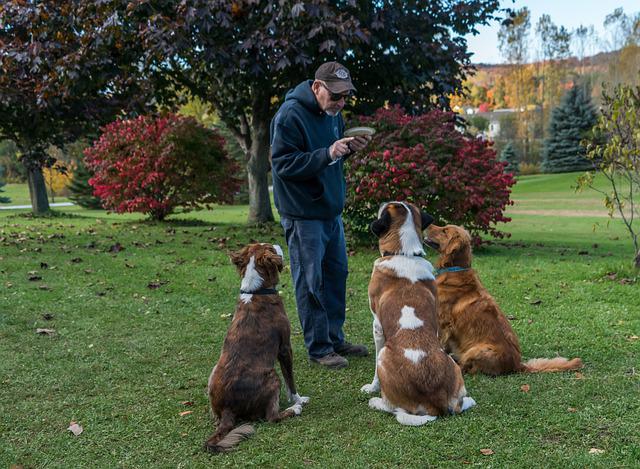Welcome to the “Easy Guide to Teach Your Dog to Sit: Master Sit Command”! If you’ve ever found yourself struggling to get your furry friend to sit on command, you’re in the right place. Teaching your dog to sit is not only a fundamental command but also the cornerstone of a well-behaved and obedient canine companion. In this comprehensive guide, we will take you through simple, effective steps to ensure your dog masters the sit command effortlessly. Get ready to strengthen your bond with your four-legged friend and enhance their obedience skills. Let’s embark on this journey together!
How to teach your dog to sit? Training a dog to do anything is difficult and takes a lot of patience. It is always recommended to start your dog training with sitting, and below we will show you some simple techniques to help you teach your dog to sit. This is one of the more important and rewarding behaviors for a dog.
By teaching your dog to sit, they then become more controlled. A great example of this is when you’re walking your dog in the street, and you want to cross the road. Your dog will learn to sit at the curb until told to cross, OR when you have guests they will sit instead of jumping up. One of the greatest dog trainers is Cesar Milan and he provides regular training advice and new and improved ways to keep your dogs trained and obedient.
Six Steps For Teaching Your Dog to Sit
Table of Contents
- Treats are always the main step in any dog training. Whilst your dog stands, hold a treat near to its nose so it can smell and see the treat.
- Using the same treat, move your hand in an arc shape over your dog’s head. This will naturally make your dog follow your movements as all they want is the treat. As they move their head to follow the treat, they will sit down to do this. Immediately reward your dog as they are in the seated position.
- The most important is practice and patience. Continue these small practices in short but often sessions.
- Your dog will quickly realize that they are getting a treat as the bum touches the ground. This will start to make them sit for longer periods of time. As they do this, it’s now time to introduce the word “sit” as they move their bums. If you do this too soon your dog could get confused and think the command is for something different.
- Again, practice is the most important part of this so continue point 4 in short and often sessions
- Once you are comfortable that the small training session has ended, then use a keyword they can recognize. “OKAY” is often a simple but effective one to use.
Alternate Techniques to Teach Your Dog to Sit
Training your dog to sit in the house is one thing but training them to sit outside is a different training session altogether. With so many more distractions just how do you keep your dog focused? Below are some alternative techniques that will help teach your dog to sit and they are 100% successful.
- Like the above technique, the off the lead technique is simple yet effective. Simply use a treat whilst your dog is standing in front of you. Hold the treat near your dog’s nose and move over his head, keeping just an inch or two away from your dog. Whilst your dog is following the treatment they will naturally sit back and place the bum on the ground. Give them the treat and completely overdo it with praise. While moving the treat around your dog’s head, it may jump or back away. This means you are too far away from his nose and they will not understand. Continue the technique regularly and often until your dog understands what is happening. Again, like before, then you can introduce the “Sit” command. Over time, your dog will start to sit on command without waving treats around the face.
- Finally, you could use a lead to train your dog although this is quicker by using a gentle push on the dog. Whilst you and your dog face the same way as if to start walking, hold the lead above your dog’s head. Once in position, gently press your dog back and say “Sit”. Your dog should react to the pushing down motion and sit down. Once they do, reward and praise. After just a few days your dog will start to sit on command and will understand what you require them to do. This is great when out walking and you get to a road you need to cross as your dog will sit on command and wait for you to start crossing before running into the road.
Important Rules You Should Remember When To Teach Your Dog To Sit
- Training sessions for any dog training should be short, regular, and often. Anything too long can quickly lose your dog’s interest. 5 minutes at a time should be more than enough.
- No structure to your training is required. Unlike babies, routine is not something dogs will rely on when training.
- Consistency is key. Before meals, you should get your dog to sit or when guests come around. Keeping consistency this way will quickly make dogs realize this is what they should do all the time.
- Reward Reward Reward. Every time your dog does what you ask. Reward.
- Clear, Precise, Commands will help your dog understand exactly what you are asking of them
- Any training for your dog should be fun
- Being consistent and repeating yourself regularly when teaching your dog to sit will help your dog learn. Don’t expect your dog to understand immediately what you are asking. Be patient and relax.
- Over time, fade out the rewards. Your dog should learn to sit without a treat. Treating your dog occasionally after being trained is fine as this shows they are still your closest friend and that is doing what you ask.
- The first time you start to teach your dog to sit, try and keep clear of distractions. TVs, Toys, Food, anything that will defer your dog’s attention from you. Once you and your dog have mastered the sit command in this controlled environment that’s when you should look at trying to introduce distractions. If your dog can continue to listen to your command whilst things are happening, then you have mastered it. You should also attempt to increase the length of time you ask your dog to sit. This too becomes a great challenge.
Mastering the Art of Sitting
Congratulations on completing our “Easy Guide to Teach Your Dog to Sit: Master Sit Command”! You’ve invested time and effort into building a stronger connection with your canine companion. As you continue practicing and reinforcing the sit command, remember that patience, consistency, and positive reinforcement are key. Your dog’s ability to sit on command not only showcases their discipline but also reflects your dedication as a pet owner. Now, go ahead and enjoy the well-deserved fruits of your training labor as you experience a more obedient and harmonious relationship with your beloved furry friend. Happy training!
Overall, we know training our dogs to do anything can be very difficult as dog owners. Teaching your dog to sit is one that is extremely rewarding when complete. Being patient and consistent in your approach will ensure your dog is also aware of his expectations. Treats are great initially when training but slowly reduce the treats as the training continues. And finally, praise your dog every time they do what you ask them to do.
Please feel free to share your dog training experiences, especially when you have started to teach your dog to sit.


